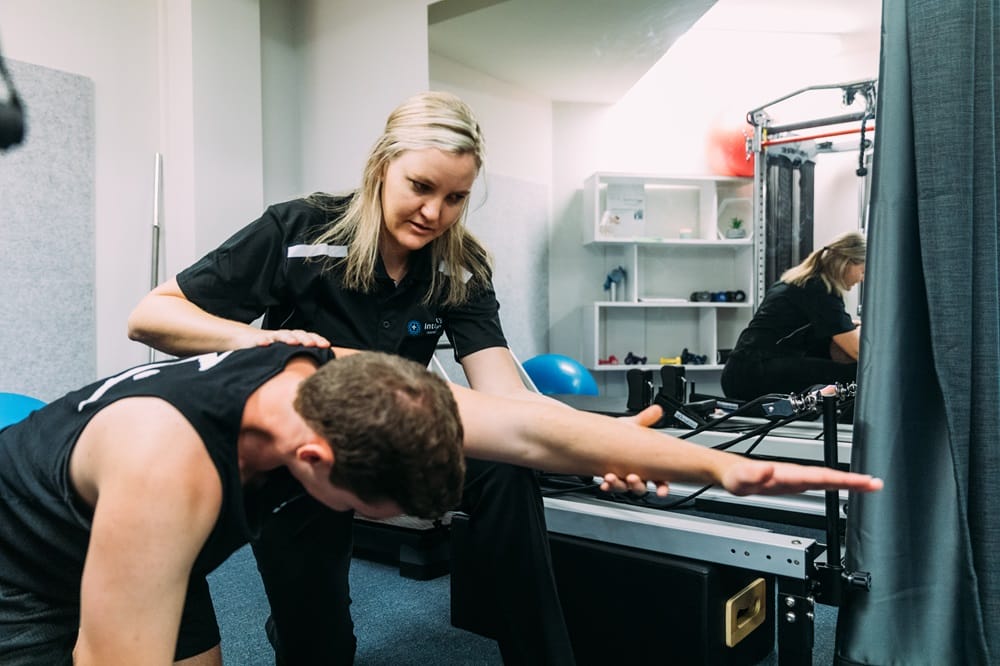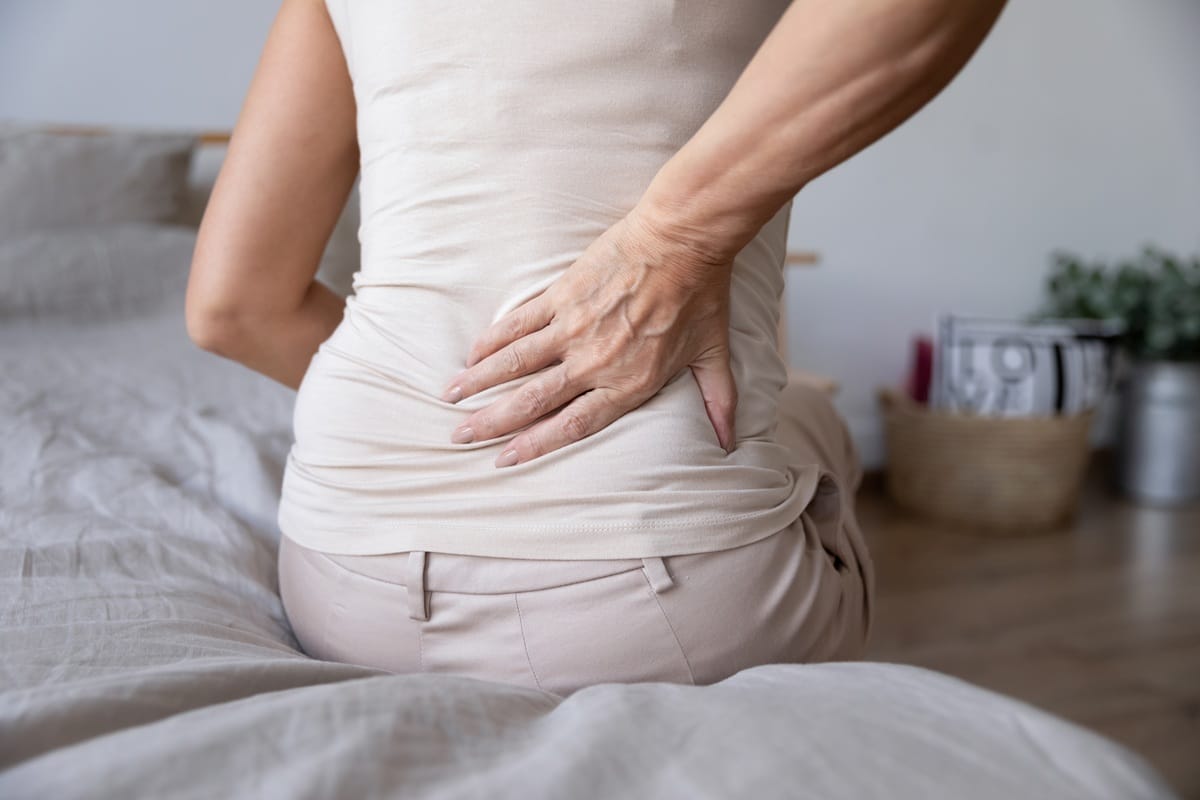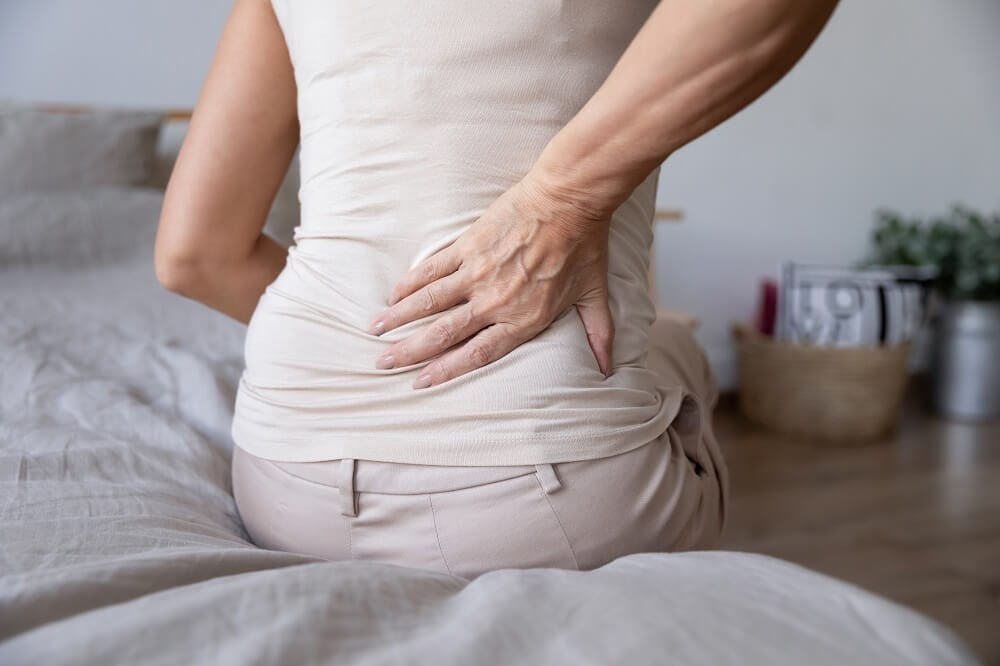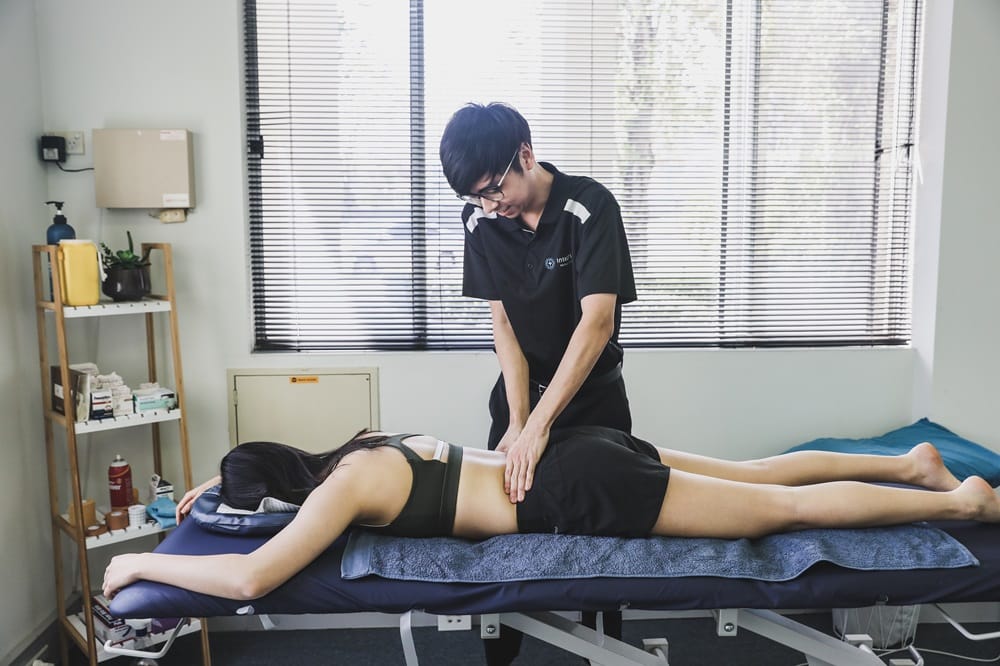
“Why does my lower back hurt?”
You might have found yourself muttering this phrase, perhaps after a long day at work or a strenuous workout.
You’re not alone; lower back pain is a ubiquitous guest in the lives of many people, from the youngest adult to those enjoying their golden years.
Understanding why your lower back hurts and seeking professional help can make a real difference in your life, and get you back to doing normal activities with ease.
So, what’s causing your lower back pain?
Symptoms of lower back pain
Lower back pain symptoms can vary greatly depending on the individual and the underlying cause of the pain. Here are some common symptoms associated with lower back pain:
- Pain: Dull ache to sharp sensation, possibly occurring only with certain movements or positions.
- Muscle Tension or Stiffness: Can be localised to the lower back or extend to the hips or legs.
- Radiating Pain: Pain may spread down one or both legs, a condition known as sciatica.
- Weakness, Numbness, or Tingling: Can be felt in the lower back, hips, legs, or feet.
- Limited Mobility or Flexibility: Difficulty standing up straight, walking, or bending.
- Sleep Disturbances: Pain may interfere with sleep.
NOTE: If you’re experiencing lower back pain with other symptoms such as fever, weight loss, inflammation or swelling on the back, pain that reaches below the knees, urinary incontinence, fecal incontinence, or severe abdominal pain, you should seek medical attention immediately, as these symptoms can indicate a serious condition.
Common causes of lower back pain
Identifying the potential causes of lower back pain is a key step towards devising an effective treatment plan. Here are the possible contributors to lower back pain.
Muscle or ligament strain
Muscle or ligament strain is one of the most common causes of lower back pain.
It can occur due to sudden, awkward movements, overuse, or a sudden increase in physical activity.
For example, if you decide to spring clean your entire house in one day, you might end up with a muscle strain due to the unaccustomed activity.
Strain from heavy lifting, if you’re not used to it, or if you are using an awkward lifting technique, can also cause these strains.
Chronic conditions, such as repetitive strain injury, can occur over time due to repetitive motions or maintaining the same position for prolonged periods.
Bulging or ruptured discs
Your lumbar spine is made up of a series of vertebrae, and between each vertebra, you have a disc.
These discs act like shock absorbers, talking load and preventing the bones from rubbing against each other.
Sometimes, these discs can bulge or rupture, a condition commonly referred to as a herniated or slipped disc.
When this happens, the disc’s inner material can leak out and press on the nerves running through your spinal canal, causing pain, numbness, or even weakness in your lower back and legs.
Arthritis
Arthritis is a group of conditions characterised by inflammation in the joints.
When arthritis affects the spine, it can lead to back pain.
Osteoarthritis, for example, results from wear and tear over time, leading to the breakdown of cartilage that cushions the ends of bones in your joints.
Rheumatoid arthritis is an autoimmune condition that can cause inflammation in any joint, including those in the back.
Ankylosing spondylitis primarily affects the spine, causing severe inflammation between your vertebrae.
Spinal stenosis, a complication of arthritis, involves the narrowing of the space around the spinal cord, which can put pressure on the nerves and cause pain.
Osteoporosis
Osteoporosis is a condition that weakens bones, making them fragile and more likely to break.
If osteoporosis affects the vertebrae in your spine, it can lead to compression fractures. These fractures can cause severe back pain and may lead to changes in posture and loss of height.
Skeletal irregularities
Skeletal irregularities refer to conditions that cause abnormal curvature or alignment of the spine. Scoliosis, a condition where the spine curves to the side, is one such condition.
While mild cases often don’t cause problems, severe cases can lead to significant back pain, respiratory issues, and physical disability.
Lifestyle factors
Many aspects of modern life can contribute to or exacerbate lower back pain.
Sedentary work, which involves sitting for long periods, can lead to poor posture and muscle weakness.
Lack of regular exercise can lead to a loss of flexibility and strength in the spine, increasing the risk of injury.
Obesity puts extra stress on your back, and smoking restricts blood flow to the discs in your spine, impairing their function.
Kidney problems
While not directly related to the spinal structure, issues such as kidney stones or infections can cause pain in the lower back, usually on one side.
This pain can be severe and may be accompanied by other symptoms such as fever, nausea, or changes in urination.
Pregnancy
During pregnancy, the body undergoes significant changes, including weight gain and changes in posture.
These changes can put added stress on the spine, leading to lower back pain.
Hormonal changes during pregnancy can also loosen the ligaments in the pelvic area, altering the alignment and causing back pain.
Endometriosis
Endometriosis is a condition where the tissue similar to the lining of the uterus grows outside the uterus, often on other pelvic organs. This can lead to a range of symptoms including back pain.
Prevention and management: helpful tips for lower back pain
Even as you seek professional treatment for lower back pain, there are steps you can take to prevent and manage the pain:
- Maintain Good Posture: Keeping your back straight, especially while sitting for long periods, can help avoid lower back pain.
- Regular Exercise: Regular physical activity, particularly activities that strengthen your core, can help keep your back strong and flexible, thus reducing the likelihood of back pain.
- Stay Active: Avoid a sedentary lifestyle. Stand up, stretch, and walk around regularly, especially if you have a desk job.
- Mind Your Lifting Technique: When lifting heavy objects, bend at the knees and use your leg muscles rather than your back. Keep the object close to your body and avoid twisting your body while lifting.
- Healthy Weight: Maintaining a healthy weight can prevent excess strain on your lower back.
- Quit Smoking: Smoking restricts the blood flow to your lower spine, which can prevent your body from delivering enough nutrients to the disks in your back.
- Watch Your Diet: Eating a healthy diet full of fruits, vegetables, and lean proteins can help keep you at a healthy weight and reduce inflammation, which can help prevent back pain.
- Manage Stress: Mental and emotional stress can manifest as physical pain, including back pain. Practices such as yoga, meditation, deep breathing, and other stress management techniques can help.
- Ergonomic Furniture: Use chairs with good lower back support. You may also consider a standing desk or an ergonomic keyboard if you work on a computer.
- Regular Stretching: Regularly stretching your back and lower body can keep your muscles flexible and reduce the risk of muscle strain and muscle spasms.
- Wear Comfortable Shoes: Avoid high heels and choose shoes with good arch support to help align your spine properly.
- Sleep Right: A mattress and pillow that support your spine’s natural curve can prevent back pain. To maximise comfort and spinal support, sleeping on your side or back is most effective.
Still sore? Physical therapy can help
The next time you find yourself sighing, “Why does my lower back hurt”, remember this: there’s always a solution.
Whether it’s simple lifestyle changes or seeking help from a physio for back pain, we can help you get on the path to recovery.
With the right help and advice, you’ll be back to doing what you love – free of pain. Book an appointment with Integrity Physio Como today!




